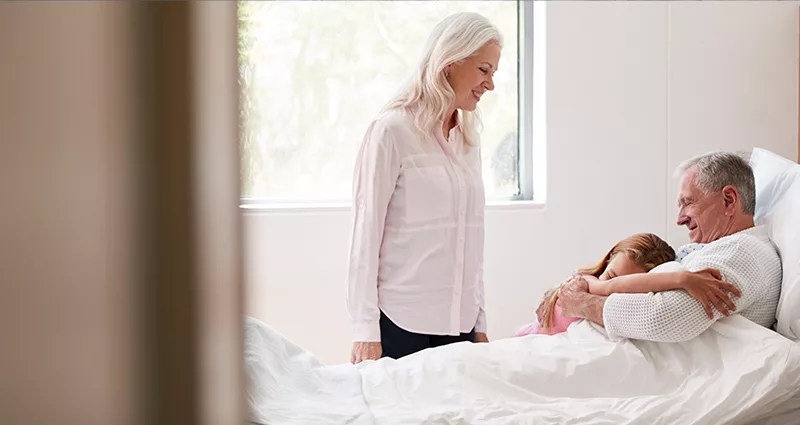Swing Bed Services
The Swing Bed program allows a physician to transition (or “swing”) a patient’s care from acute medical need to skilled nursing or rehabilitation. It assumes that the patient has the ability to improve and achieve higher levels of functioning. The goal is individualized care directed towards meeting the patient’s needs. The decision to go “swing” is made by a consulting process between the patient, his or her family, the physician, the nurses, and discharge planning.
The Swing Bed program provides a viable option for patients in need of skilled services in the local community, to keep them close to home and family. The Swing Bed program can help patients prepare for a safe and sustainable return home. It can also reduce re-admissions and provides great nurse/rehabilitation ratios.
What is Skilled Care?
It is important to understand that “skilled care” is rehabilitation and skilled nursing. Skilled care implies the need for professional care and monitoring, whereas “nursing home care” can be skilled or custodial care.
Skilled Nursing Care
Nursing Services will develop an Individualized Care Plan with the goal of allowing the patient to return to the highest level of functioning possible. Some obvious skilled services include:
NURSING CARE
- Intravenous (IV) or intramuscular (IM) injections
- Nasal-gastric/gastro/jejunostomy feedings
- Heat treatments requiring observation
- Treatment of decubitus ulcers (stage 3 or worse) or a widespread skin disorder
- Application of dressings with prescription medications and aseptic technique
PROFESSIONAL OBSERVATION
- Medical conditions (such as uncontrolled diabetes or acute CHF)
- Vital signs for special purposes (such as specific medications)
- Psychiatric conditions (such as depression, anxiety, or suicidal behavior)
TEACHING OR TRAINING
- Newly-diagnosed diabetic education
- Care of Hickman catheter or central lines
- Specialized dressings and skin care
Skilled Rehabilitation Services
Rehabilitation Services will do an initial assessment of the patient’s condition, needs, and potential, then ongoing assessments of his or her progress. Depending upon the patient’s needs, rehabilitation services may include:
PHYSICAL THERAPY
Work to improve the patient’s endurance and help to resume his or her life activities (such as walking, exercising, improving balance, strength, and flexibility). Therapists also educate the patient and family on safety and mobility.
OCCUPATIONAL THERAPY
Work to restore independence in daily living after an illness, injury, or surgery. Provides education and training to accomplish tasks to avoid pain and fatigue. Therapists will assess the need for assistive devices and provide training.
SPEECH THERAPY
Assisting patients with:
- dysphagia (difficulty in swallowing)
- interpreting and remembering written and spoken statements
- expressing thoughts through speaking, writing, and facial expressions
SOCIAL SERVICES
Assisting the patient, family and/or significant other with goals including:
- discharge planning, personal resources, and financial needs.
Expectations
It is important that the patient (family/representative) understand the Swing Bed concept, as well as the type of services provided. It is just as important to explore expectations of care from both the patient’s point of view, and the nursing staff’s point of view.
General expectations:
- The patient is expected to do as much for himself or herself (such as dressing in his or her street clothes) as possible.
- The patient and other team members should discuss the patient’s progress daily.
The patient and other team members should understand the patient’s Rights & Responsibilities and the Resident Information.
Requirements for the Swing Bed Program
- The Swing Bed program is available to all types of insurance.
- Prior to “swing” status, Medicare patients must have a 3-day Inpatient qualified stay and have a skilled need.
- A patient can be in “swing” status while awaiting a bed at another facility.
- A patient can stay in “swing” status as long as he/she is working toward the identified goal for rehabilitation or still has a skilled nursing need.
